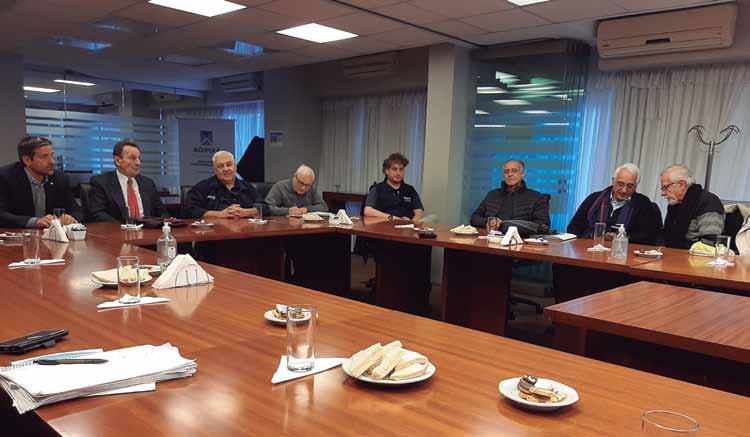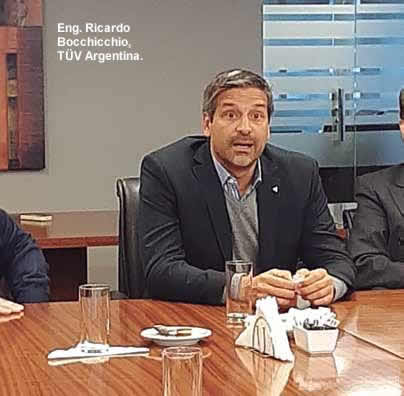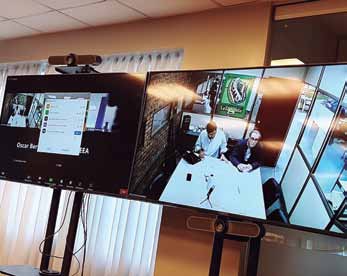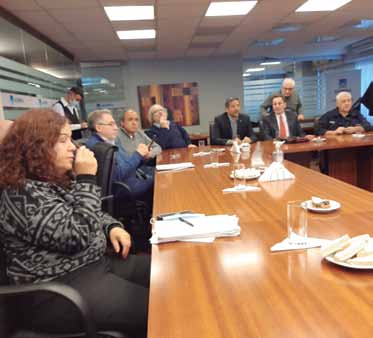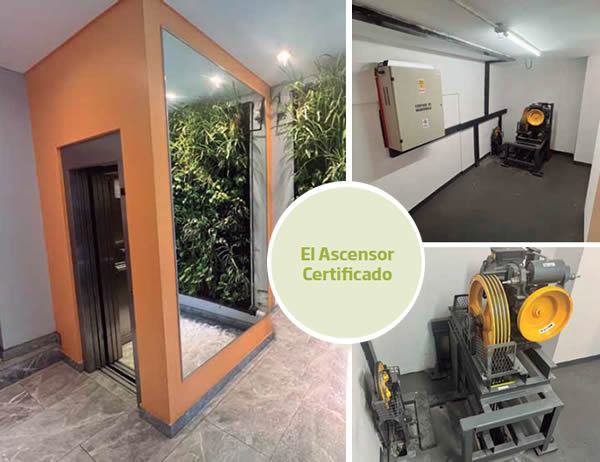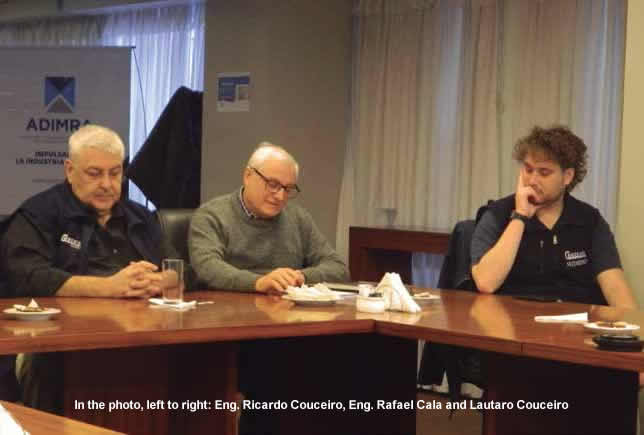
Couceiro S.A. is the Argentine elevator company that achieved the first certification for the installation of complete equipment of national origin, in accordance with the IRAM 3681-1 Standard.
This certification has made the CEO of Couceiro S.A., Eng. Ricardo Couceiro proud, but also the entire national vertical transport industry, which with this great technical advance has managed to put us on a par with any developed country, commented the Ing. Santiago Tentori, the great expert on the subject, who collaborated with his great knowledge on the subject and was a source of permanent consultation and a great promoter of this very important initiative. Tentori added that thanks to Couceiro S.A. and with the support of the TÜV certifier, today in Argentina it is possible to do the same as in Europe and other developed countries since Argentina has regulations, agencies, and laboratories.
This achievement is the product of a courageous decision carried out with perseverance by Couceiro and his entire staff of workers, with the unconditional support of CAFAC (Elevator and Component Manufacturer Chamber) and the professional work of Ing. Ignacio Venútolo, the technical coordinator of ITEEA (Technological Institute for the Study and Teaching of the Elevator), responsible for preparing the Technical File necessary to carry out the project.
On July 4, at a meeting held at CAFAC, at the ADIMRA headquarters, were also participated Ing. Gerardo Venútolo also participated; the businessman Fabián Rojas; the current president of CAFAC, Marcelo Bellosi; Professor Eduardo Padulo; Eng. Carlos Vacca, and Eng. Rodrigo Bochicchio from the TÜV Certifier, everybody was informed about the entire preparation process prior to the Certification itself that was carried out. The meeting was shared by zoom with IRAM members and professionals from all over the world.
TECHNICAL RECORD
ITEEA together with CAFAC joined forces to achieve this goal. As we mentioned before, Mr. Tentori was the interlocutor of ITEEA who carried out the documentation to be able to prepare the technical file.
Engineer Ignacio Venútolo, technical coordinator of ITEEA, prepared the technical file. During the meeting, and with the help of filmstrips, he commented on what said file consists of.
Basically it is a folder that contains all the documents required by the IRAM 3681 Standard to ensure that the installed lift complies with what is required by said Standard. Step by step, Venútolo explained what said file contains to illustrate the work carried out at ITEEA, in preparation for Certification.
What does this technical file consist of? It is the sum of the general data of the installation and the descriptive memory of the elevator, to which the safety components and other elements that are installed are added. It also includes the characteristics of the machine, the electrical installation and the calculations that verify that everything included in that elevator is in accordance with standards. As an Annex there are the plans, the electrical diagrams, certificates of the safety components that have to comply with Resolution 897 and the voluntary certifications of certain elements, the calculation memory and the different component manuals that the manufacturers deliver, which explain the installation , commissioning, use and maintenance.

The descriptive memory explains the type of equipment, number of passengers, speed, and number of stops. The safety components included have been previously certified as required by Resolution 897 and are: landing door interlock, governors, buffers (if they are springs, they do not need certificates), safety gears, electrical safety devices and steel ropes. As a photo an INTI Certificate.
A technical file must ensure that all the security components that are settled in that installation have the due certificate up to date with respect to what is required by the regulations. As for other components, some may have a voluntary certificate, and in other cases there may be a technical report or test report, which would be like a sworn statement, where the installer ensures that certain component, such as the resistance of the foot guard, complies with everything required by the IRAM Standard, in order to be installed. It also includes the control panel with some voluntary certifications, glass and other elements that the lift may have installed.
Another item contained in the technical file is a section on the traction machine that may or may not be voluntarily certified, with all the components and characteristics of the machine and the corresponding plans.
Calculations
All that the Standard requires is that in the technical file there is a section with all the calculation memory that ensures that all the components comply with the different requirements that are requested in the standard. And what is done from ITEEA, with all the data provided by the installer, is to verify with all the calculation engine they have developed, that all the requirements of the Standard are met.
Installation plans: When ITEEA receives the plans sent by the installer, showing how the machine room is going to be assembled, it is verified that the minimum required spaces are obviously fulfilled when assembling the technical file, so as to put a case of what we do with the information that the company sends us.
Manuals
The file includes the assembly, verification and start-up manuals and technical sheets. A maintenance manual is also included. If the company does not have one, ITEEA collaborates with their preparation. The manuals of all the different components provided by each of the manufacturing companies are also added and collated.
TÜV CERTIFICATION
Next, Eng. Rodrigo Bochicchio took the floor to expand on the Certification processes. He previously emphasized the importance of the Couceiro S.A. initiative, not without explaining that the long-awaited certification is the product of many years of work and exchange, of going back and forth with the company and with CAFAC and ITEEA.
“Certification is essentially compliance with a standard, it is not much more complex than that. The complexity lies in reaching it, and for that, a decision, a company, time, conviction is needed and, in this case, the Couceiro firm together with the ITEEA has had it and in that sense, we are very grateful. Our work as certifiers has been simple; we have required what the Norm and the Legislation request, and they have provided it to us in a totally open manner. The certification process, going to a more operational aspect, is based on validating that everything that is said in the papers is fulfilled in the installation that is our function”.
The operating framework of what certification involves.
In this function, there is first a cabinet stage, explained Bochicchio, in which all the documentation of the plans is received from the company. An entire evaluation is made in accordance with the Standard. In this first stage, all the documentation goes under inspection: the planimetry, all the tolerances, and the mandatory and non-mandatory certificates. Let me tell you, he explained, that the Standard and the processes are closely aligned with global processes, we are at the same level as Europe or other continents, and we have nothing to envy them. The process we follow is the same as that applied abroad and our specialists have applied it here locally to achieve certification.
If in the analysis of the documentation, some finding is produced, additional documentation is requested; the most critical part is in the certificates of the components, and the compliance with the planned spaces. But once those steps are put together and completed, the Certification is not complex and does not require a lot of wear and tear or a great level of detail. All the documentation that can be provided in this instance is very useful because in this way we can make an evaluation that is the second stage, which is the stage in situ, in the field, and on the construction site.
With all the documentation prepared, he continued, we go to the installation site and verify that everything the papers say is coherent and consistent with what is installed. As soon as this entire part is validated, the final tests in situ begin to be carried out: start-up, tests that are detailed in the regulations; nothing is done that is outside the norm or anything that cannot be foreseen in time. Once the on-site inspection, the technical documentation, and the documentation generated in the field are done, the information goes to a certification committee that consolidates all the documentation, which validates that the inspectors in the field have done all the tests, all the photographs and records of the inspection are surveyed and based on that a determination is made which, if positive, culminates in the issuance of the Certificate. In the event of a finding, a report is issued with the news, and from there, an adjustment stage is opened in order to obtain certification. In this first case, it was concluded that the inspection was satisfactory and the Certificate was issued. A certificate that is in accordance with the Application Standard and the Laws.
Eng. Ricardo Couceiro cannot hide his satisfaction at having certified the installation of the first elevator in Argentina. But that happiness does not have to do only with the fact of being the first, but with the pleasure of having completed an arduous task of years that, as he himself underlines, was the effort of many. “The truth is that when everything ends and the process ends and they tell you that it is certified, you feel an indescribable sensation” he confesses happily.
“This project was born in CAFAC and ITEEA; then I took the idea to my company, I discussed it with my nephew Lautaro who was my interlocutor, together with Santiago Tentori and Ignacio Venútolo. The whole process took years, a lot of work, but now the path has been paved, and the next company that certifies will do it much more easily, and in half the time. I hope many more will continue. I must say that TÜV also gave us great support indicating that we had to correct and improve, all based on the IRAM Standard. I want to thank all these people and the staff of my company, a team with whom we have worked for many years, where everyone contributed and helped from their place.
Building
The certified elevator is located in Palermo, more precisely in Cabrera and Bulnes, Buenos Aires city. It is an elevator for 450 kg of load or 6 people. Couceiro says that they chose a building on construction and explained to the owner that they were going to place a certified elevator that it was going to take longer, that the conditions were different, and that some building modifications had to be made to adapt the work, which is not always suitable to comply with the Standard.
It is important to know that the City Government does not object to these reforms, as long as the rest of the things comply with the Building Code. It is also good to know that each installation must be certified, but the technical file is already used for the entire family of lifts.
Despite so much work, he wants to try again and take one more step; between this year and the next one, the hydraulic elevator will be certified, by the same group of people.
VOLUNTARY CERTIFICATION
For now, the certification of the complete elevator will be voluntary. Engineer Gerardo Venútolo wisely stated that “We have decided not to go against the windmills. The Secretary of Commerce does not support the idea of compulsorily certifying the complete elevator, therefore we assume the role of promoting certification and that elevator companies take it as a superlative level of the elevators they deliver to their clients. We hope that over time this will be a differential quality that will give them good results and commercial responses by offering them to construction companies as a quality bonus for their buildings and then perhaps engineers could include it as a condition in their specifications. ”
GREATER SAFETY AND PEACE OF MIND FOR THE INSTALLER
With the certification of the Installation, much has been gained in security, since it would be useless to put certified components under Resolution 897 if they are not properly installed. Paradoxically, it is safer to install correctly a non-certified element than to install a certified one, in a non-correctly way. In addition, this allows the installer to sleep peacefully because the installation is audited. “There may be Resolutions and Ordinances, but if the Ordinance omits the Standard, we are left halfway there”, concluded Mr. Tentori.
To conclude, we will say that the IRAM 3683 and 3685 Inspection and Maintenance Standard has recently been in force, which will be submitted to study to begin applying soon. The standard for modernization and updating of pre-existing elevators will also be issued soon.
